
The Sabarmati Ashram was selected as the final site cause of the location. The peaceful nature inside the ashram showed the simplicity of Gandhi’s life.
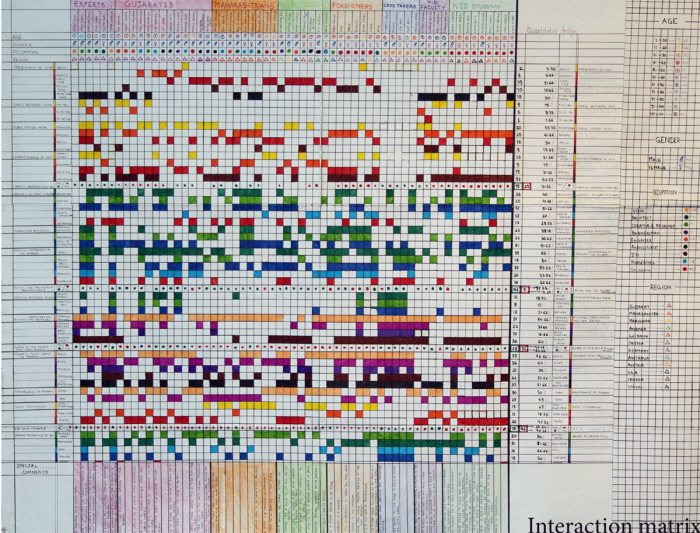
User analysis was done on the basis of interviews of the people who visit the ashram on a daily basis, as visitors and the people who are closely tied with the ashram. This matrix opened up opportunity areas to select the space. 60 people were interviewed before the matrix was done. This analysis played a major role in selection of the space.
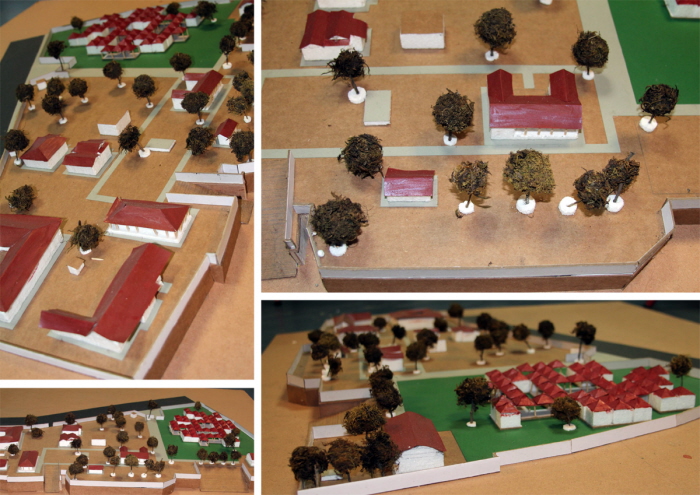
Site model
Scale- 1:200 The plan was was drawn out with the help of an existing map. The place was measured accurately and the model of the ashram was made accordingly
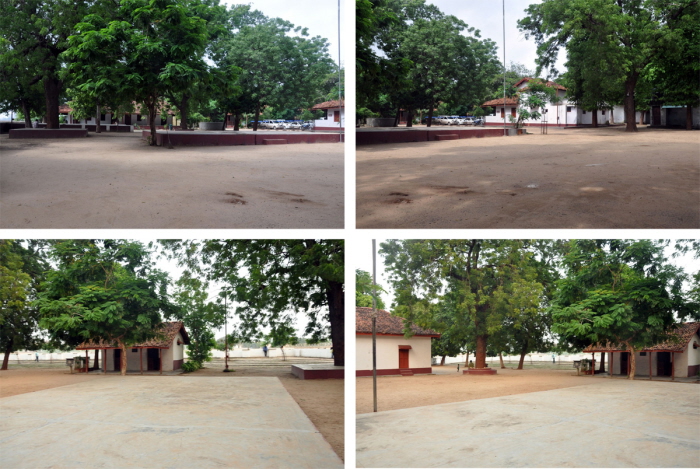
Selected space
The space chosen was a platform where public meetings are held. This platform has Hriday Kunj on the left, Vinobha kutir in front, Nandini on the right and the exit at the back. When we spoke to the director of the ashram we were told that the present exit will be changed and become the entrance to the ashram and the current entrance will act as the exit; with regards to this the platform could be one of the areas of opportunity and hold a lot of potential in context to space exploration.
The size of the platform is 11m by 6.6m.
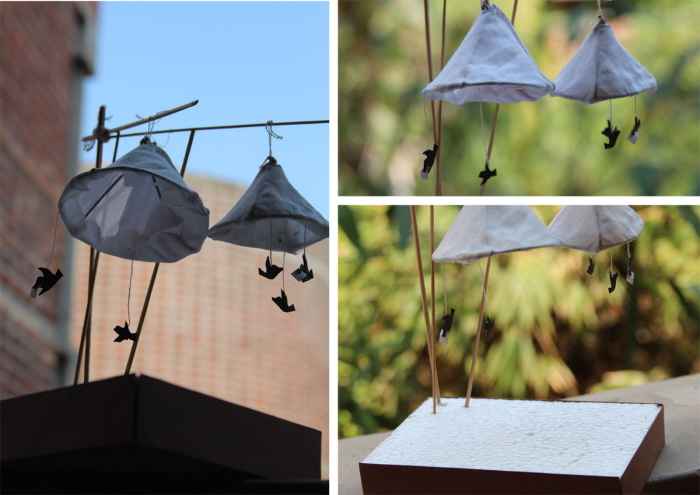
This was inspired by the word “FREEDOM”. Keeping in mind the birds of peace carrying around the message of gandhi with a shelter on top which would give shade.
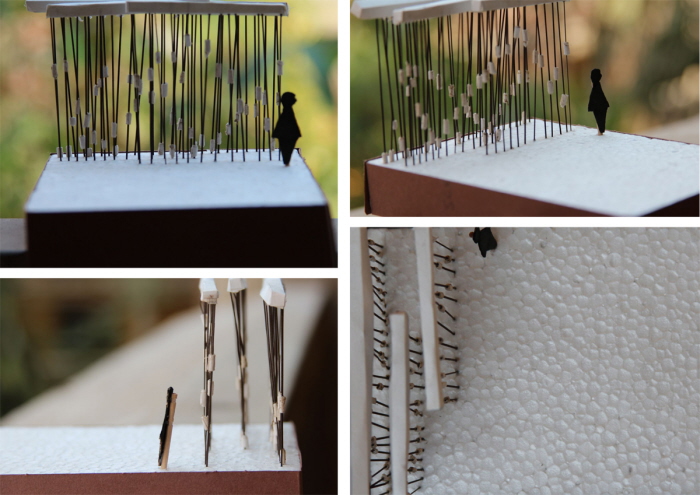
This exploration was inspired by the bars of a prison cell Gndhi had spent a significant amount of time in Jails, fighting for India’s freedom. This was to give the public a glimpse of what it feels lik in captivity particularly behind bars inside a prison cell and from there it merged with the idea of the loom. The loom thus forms the second aspect of the concept behind this exploration/design. This would be an interactive back drop for talks and lectures where people can come and move those thread reels and read Gandhi’s sayings and messages,which would be engraved on the thread reels.
gLike
